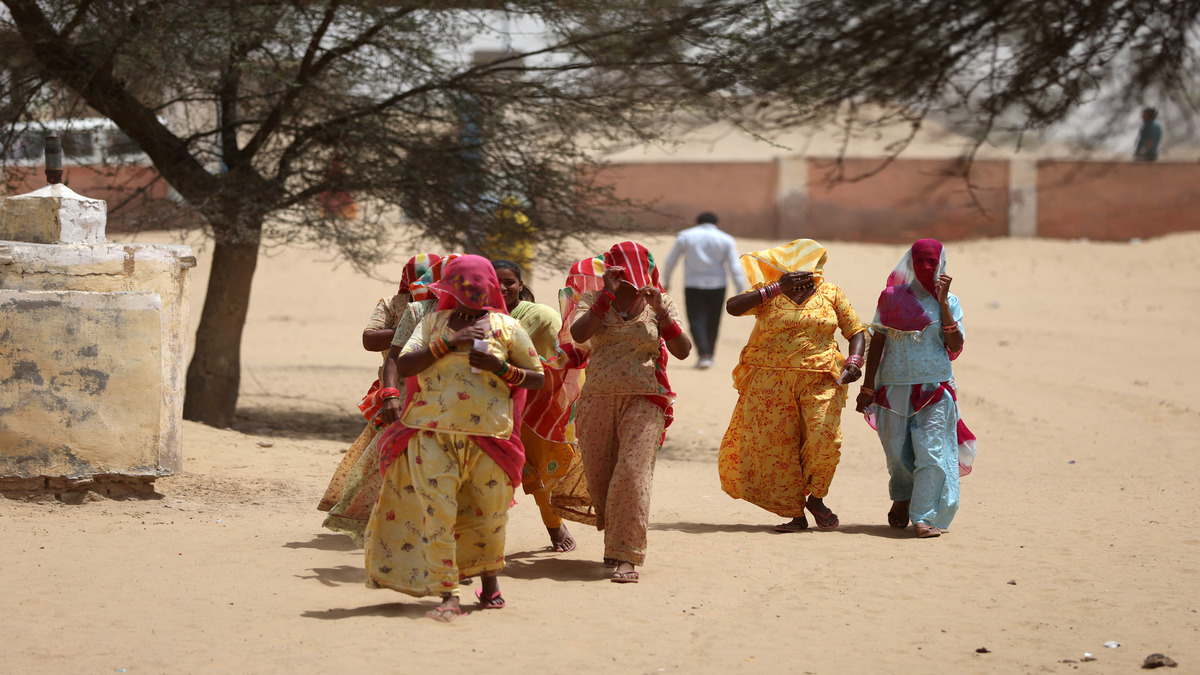Temperatures are rising and it is amid this unpleasant weather that India is heading to the second phase of its general elections. The Lok Sabha polls are being held in seven phases, with the counting of votes on 4 June.
Extreme heat is being blamed for the low voter turnout in the first phase of polling on 19 April when 102 Lok Sabha seats spread across 21 states and Union Territories voted. A dip of 4.4 per cent was recorded in these seats, as the voter turnout stood at 65.5 per cent this year from 69.9 per cent in the 2019 general elections.
As 13 states and Union Territories go to polls on 26 April in the second phase, will the heatwave impact the voter turnout?
Let’s take a closer look.
Which states are going to poll?
The second phase of polling will cover 88 constituencies in 12 states and one Union Territory.
Kerala’s all 20 Lok Sabha seats, 14 in Karnataka, 13 in Rajasthan, eight seats each in Maharashtra and Uttar Pradesh, six in Madhya Pradesh, five each in Assam and Bihar, three each in West Bengal and Chhattisgarh and one each in Tripura, Manipur and Jammu and Kashmir.
Are there heatwave predictions?
There is a heatwave warning for parts of four states – West Bengal, Bihar, Uttar Pradesh and Karnataka – going to polls in the second phase.
Impact Shorts
More ShortsAccording to the India Meteorological Department (IMD) forecast, hot and humid weather is expected in Assam, Meghalaya, Tripura, Konkan, Goa, Coastal Karnataka, Tamil Nadu, Puducherry, Karaikal, Kerala and Mahe.
“Heatwave to severe heatwave conditions likely to prevail in some pockets over Gangetic West Bengal and in isolated pockets over Odisha; heatwave conditions in isolated pockets over Uttar Pradesh, sub-Himalayan West Bengal, Jharkhand, Bihar, Coastal Andhra Pradesh and Yanam, Rayalaseema, Telangana and interior Karnataka,” as per the IMD.
Speaking to NDTV, Dr Naresh Kumar, senior scientist at the IMD, said that the weather agency has issued a red alert for West Bengal for the next three days.
“Temperatures in Bihar will exceed 40 degrees Celsius. A heatwave is expected in eastern Uttar Pradesh after 24 hours and in western Uttar Pradesh after two days. The temperature will remain hot and humid in Kerala too,” he said.
The IMD previously warned that heatwaves lasting 10 to 20 days, unlike the normal four to eight days, are expected between April and June.
Gujarat, central Maharashtra and north Karnataka are most vulnerable to heatwaves, followed by Rajasthan, Madhya Pradesh, north Chhattisgarh, Odisha and Andhra Pradesh, as per the IMD.
What is the EC doing?
A day back, the IMD Director General, Mrutunjay Mohapatra, assured the Election Commission of India (ECI) that heatwave is not a major concern for the second phase of elections.
The ECI Monday (22 April) formed a task force consisting of officials from the IMD, the poll body, the National Disaster Management Authority (NDMA), and the Ministry of Health and Family Welfare to assess the impact of heatwave and humidity five days before each phase of polling.
This came after the election commission held a meeting with the IMD and representatives of the Union Health Ministry to comprehend the developing weather situation and discuss mitigation measures.
The EC has asked the health ministry to issue “necessary instructions to health authorities in states to prepare for and extend assistance in case of heatwave conditions affecting election operations,” as per the press release by the poll body.
A meeting with Chief Electoral Officers (CEOs) of the states will also be organised to take stock of arrangements at polling stations such as awnings, drinking water and fans to beat the heat.
Will heatwaves affect voter turnout?
It could.
According to NDTV, data from Bihar’s Nawada and Gaya show that higher temperatures, especially above 40 degrees Celsius, affect voter turnout .
On 11 April 2019, the voter turnout was 52.5 per cent in Nawada when the maximum temperature was 35 degrees Celsius. This dipped to 41.5 per cent on 19 April 2024 when the mercury was 42 degrees Celsius.
Similarly, the voter turnout in Gaya was 56 per cent in 2019, when the maximum temperature was 35 degrees Celsius. It dropped to 52 per cent on 19 April this year, when the maximum temperature was 42 degrees Celsius.
If the mercury soars at the constituencies going to polls in the second phase, it might deter voters to take part in the electoral exercise.
With inputs from agencies
)